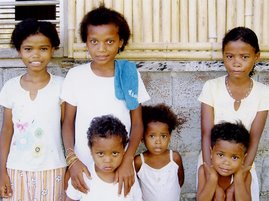This week's topic on disaster management and preparedness has hit a little close to home for me. The case study article discussed the IATA recommended emergency response plan for air carriers. My father and my brother are both commercial airline pilots so they can certainly agree with the need for an effective emergency response plan to deal with public health emergencies.
After 9/11, airline security has seemingly gone out of control. People without printed tickets and proper identification are no longer allowed beyond the security checkpoints. TSA officials screen passengers for everything, from firearms and knives, to nail files and any liquids not in a 3 oz. container. Lines at security checkpoints are horrendous as people slowly remove their shoes and place them on the conveyor belt. Onboard the aircraft, bullet proof doors have replaced the previously flimsy cockpit doors and young boys aspiring to be pilots are no longer allowed into the cockpit, where they would once receive their gold wings. Undercover armed air marshals even fly alongside the crew. But are these measures even enough to prevent terrorist attacks from happening? Probably not.
For starters, pre-flight screening for firearms, knives, and other possible weapons will never suffice. There are numerous objects already onboard or that will pass inspection that can be used directly or modified in the advent of a terrorist attack. Keys and pens make great weapons, and so will a broken bottle of liquor. Also, the bullet proof doors installed after 9/11 are not man-proof. They may stop a bullet from penetrating, but a moderatley sized man could easily throw himself into it and knock down the door. Even though pilots carry firearms in the cockpit, most of them are not trained to use them properly. And one or two air marshals probably won't effectively stop determined terrorists from hijacking the plane.
It's scary to think that no one is safe while flying - we never were and we never completely will be. However, there are other preventative measures airlines can take to better ensure everyone's safety. Although it is necessary to screen passengers for potential weapons, efforts to screen for every little thing will prove not only useless, but time consuming as well. TSA needs to stop where it's at now, and other avenues should be considered. Two cockpit doors can be installed on every aircraft instead of just one. Once installed, only one door should be opened at a time. Pilots should be trained to use firearms and they should also be required to take continuous self defense training. Their first priority to is to protect themselves so that they can ensure the safety of everyone else. Public service announcements should also be made in terminals and on the aircraft pre-flight that educate passengers about how to recognize and react in a terrorist situation. Flying is a rather risky way to travel nowadays, and it can be pretty scary for many people. But, the more people are aware of what to look for and how to handle such events, the better prepared we will be in responding to airline emergencies.
Subscribe to:
Post Comments (Atom)






5 comments:
Are earplanes the only risky way to travel nowadays, what about cars, or worst bikes?
Do we just need to accept that things are getting more complicated or theres aneed for action to take place...
hey cori, these are some great suggestions. i think 9/11 proved that a crime situation in an airplane can have very different implications from a freak incident on the ground for two reasons: 1) it may be an attempt to create even more disaster by flying into a highly populated area and 2) because there are already so many people inside the plane.
having said that, i think public health experts should be consulted on what the biggest dangers are, and guard against those. for instance, a 5 oz bottle of liquid can do some damage (depending on what's inside it), but it is certainly not as dangerous as a 3 oz spray bottle of liquid (aerosolization means inhalation of the harmful agent instead of just skin contact). so i think developing priorities is important. with all the money that's been fueled into emergency response in the past few years, we still have a responsibility to ensure that precious funds are being used wisely.
Hello Cori,
Yes, it has become more cumbersome to fly and are we any safer in the air than we were before 9/11 ? The measures in place may afford some protection from having an exact replica of 9/11 happening. But, in my opinion it is unlikely that terrorists would repeat the exact scheme. If we really want to combat terrorism, we should start with U.S. foreign policy and let old ladies get on the airplane with their toothpaste and hair gel. Finally, despite the threat of a terrorist attack in the air, air travel is still the safest way to travel. Give me 5 1/2 hours on a plane to New York over 3 days in a car anyday :).
If was afraid to fly before, I am certainly more afraid to fly now! But I agree, security efforts are, at times, misplaced. It is fascinating to hear your perspective about security measures because you have access to key stakeholders. I feel we may never be truly safe but I hope we find more appropriate ways to safeguard aviation.
Hi Cori, hahaa I never was paranoid about flying pre- and post-9/11 although perhaps I will be a little more now... I think you make some excellent suggestions. I also agree that the safeguards in place, really don't do too much in increasing our safety. For instance, at they screen our luggage, but how well do they screen airport personnel? My friend bought a new camera right before she graduated. She stuck it in her luggage on her way to NY (she was home before she went back to her graduationfrom NYU) and when she opened her luggage at her hotel, there was only an empty box where her camera used to be. Any one of them can open our suitcases afer they've been checked, stick a bomb in, and send it straight into the airplane. Just some food for thought. thanks for you post.
Post a Comment